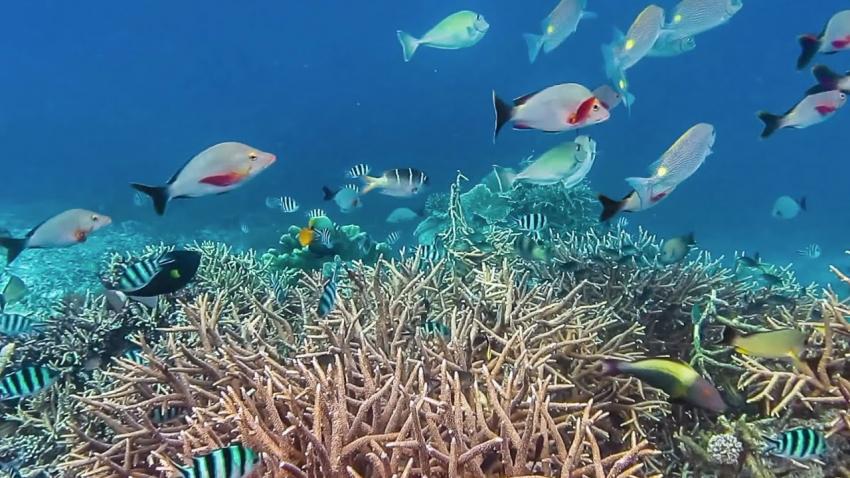Humans depend on nature—including the ocean—for all of our needs: from the air we breathe to the food we eat and the energy we use. However, unsustainable human activities and overexploitation of the species and natural resources that make up the habitats and ecosystems of all wildlife are imperiling the world’s biodiversity.
Ensuring healthy marine life is a major goal of the 2020 United Nations Ocean Conference, to be held in Lisbon, Portugal, from 2 to 6 June. One of the eight interactive dialogues to be addressed by countries and other ocean stakeholders in Lisbon is dedicated to managing, protecting, conserving and restoring marine and coastal ecosystems.
And, since the vast majority of the ocean remains unmapped, unobserved and unexplored, with many species out there still to be discovered, the Conference will seek to generate more investment and better infrastructure for supporting ocean science.
Protecting marine life will be front and centre in what has been dubbed the “super year” for biodiversity. Kicking off with the World Wildlife Day on 3 March, the year will be an opportunity to mobilize concrete action to protect the Earth’s nature at key events such as the UN Ocean Conference, the UN Biodiversity Conference in Kunming, China, and the UN Climate Change Conference in Glasgow, UK.
“Let us remind ourselves of our duty to preserve and sustainably use the vast variety of life on the planet,” said UN Secretary-General Antonio Guterres in his message for World Wildlife Day. “Let us push for a more caring, thoughtful and sustainable relationship with nature. A world of thriving biodiversity provides the foundation we need to achieve our Sustainable Development Goals of a world of dignity and opportunity for all people on a healthy planet.”
There’s no better time to act, as the two biodiversity-related targets of the Sustainable Development Goal 14 on Life Below Water hit their deadline this year. SDG Target 14.2 states that by 2020, we must sustainably manage and protect marine and coastal ecosystems to avoid significant adverse impacts, including by strengthening their resilience and restoring them in order to achieve healthy and productive ocean. SDG Target 14.5 says that the world must conserve at least 10 per cent of coastal and marine areas by 2020, consistent with national and international law.
Good progress has already been made on Target 14.5 on marine protected areas (MPAs), according to the latest Secretary-General’s latest report on Goal 14 progress. As of December 2019, MPAs cover almost 8 per cent of the world’s ocean. If concerted efforts to implement national commitments continue, target 14.5 is likely to be achieved by 2020, although their current, uneven geographical distribution limits their effectiveness, connectivity and representativeness.
Furthermore, the UN DESA SDG Report states more than 24 million square kilometers, or over 17 per cent of waters under national jurisdiction were covered by protected areas, a significant increase from 12 per cent in 2015 and more than double the extent covered in 2010.
Much more needs to be done, however, to achieve Target 14.2. The state of marine and coastal ecosystems has continued to deteriorate, due to overexploitation of plants and animals, ocean warming, climate change and poor management. Climate action focusing on ocean ecosystems presents an opportunity for mitigation and adaptation action to build resilience and generate benefits for people and nature.
Ivonne Higuero, Secretary-General of the Convention on International Trade of Endangered Species of Fauna and Flora (CITES) recently called for transformative changes, as we find ourselves at a critical turning point both for our species and for the entire biosphere. “Now more than ever we must come together in a joint effort to sustain all life on Earth”, she said.
About UN DESA
UN DESA Products
UN DESA Divisions
- Office of Intergovernmental Support and Coordination for Sustainable Development
- Division for Sustainable Development Goals
- Population Division
- Division for Public Institutions and Digital Government
- Financing for Sustainable Development Office
- Division for Inclusive Social Development
- Statistics Division
- Economic Analysis and Policy Division
- United Nations Forum on Forests
- Capacity Development Programme Management Office

